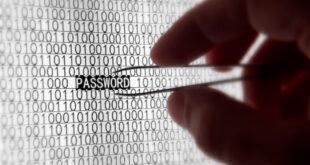Most people who own laptops have very little trouble with them. Even so, that doesn’t mean that they don’t have problems. In this guide, we’ll share our tips for troubleshooting your laptop problems so you don’t have to spend days at the computer repair shop trying to figure out what’s wrong.
Your laptop suffers from problems. These problems are often caused by the hard drive, memory or the inverter board. The hard drive issues are most often caused by the hard drive failing. The memory issues are most often caused by bad RAM. The inverter board is most often caused by a bad inverter board. The truth is, the hard drive, RAM and inverter board can all be repaired by knowledgeable technicians. The hard drive needs to be replaced if it fails. The RAM needs to be checked for bad chips or bad connections, and replaced if it fails. The inverter board needs to be tested for bad solder connections or loose pins, and repaired if it fails. If the hard drive, RAM or inverter board fail, it’s
Your laptop may have problems, but don’t worry. Here are seven steps you can take to ensure you’re getting the most out of your laptop:
It’s Possible That You’re Interested In
There could be a number of reasons why your laptop isn’t working. It might be anything from a shattered screen to a motherboard that has shorted out. This article will show you how to perform basic troubleshooting actions if your laptop won’t switch on, won’t post, or exhibits other symptoms when you try to use it. You’ll learn what popular manufacturers recommend for their consumers, as well as how to troubleshoot computer issues with Windows 10’s software tools.
You don’t need to spend a lot of money on it.
In this post, we’ll go through some of the most common laptop problems and propose solutions that don’t require a lot of money. These remedies range from preventative procedures to those aimed for after your laptop has been damaged.
You may have noticed that your laptop is having difficulty starting up properly. We’ll go over where to locate your hardware configuration and why your system isn’t booting up properly in this guide.

Laptops and notebooks can be broken, although it’s usually not due to a significant issue that requires immediate repair. Most of them can cope with little damage, and if you address problems early enough, time can totally resolve them. If you’re the type of person who wants a computer that works whenever you want it, these remedies will assist you in achieving that objective, regardless of what went wrong.
When you have a laptop, having a non-working screen is one of the most frustrating things to deal with. We’ll go over how to troubleshoot and remedy this issue, as well as some preventative actions you can take to avoid burning your laptop’s display in the future.
When you have a laptop, having a non-working screen is one of the most frustrating things to deal with. We’ll go over how to troubleshoot and remedy this issue, as well as some preventative actions you can take to avoid burning your laptop’s display in the future.
The cooling system in a computer, like any other electronic device, is a critical safety feature. Hot computers can damage themselves and other components, and in exceptional situations, they can even catch fire. We’ll show you not just how to make sure your laptop gets enough air, but also how to reinstall or replace your complete cooling system if necessary.
This article will go over some of the safety features that come with your laptop and how to make sure you have all of the options accessible to keep your system secure and ready for any problem that may arise.
The data in this piece was gathered from a variety of sources. Some companies, technical journals, and even other people may be cited in this article without being given any credit. This isn’t a cop-out; numerous tech help services have discovered that most individuals don’t have a thorough understanding of computers and are unwilling to put in the effort to learn. There is no guarantee that the information provided is correct. If you have any new information that you think would improve this post, please leave it in the comments.
Additional Information:
Please email us any additional information that would help us improve this article. More information might be beneficial to others in the future, as it is difficult to discover particular information regarding laptops, especially when they may not be compatible with other devices… Do you want to fix your computer yourself?
You’ve come to the correct location. Taking something to a professional is the best approach to learn how to repair it. The issue is, how can you know which professional to contact? It can be difficult to locate one that specializes in your field. Referrals are usually a good idea, but you may also use Google to look for a specialist by location or zip code.
Consider the following actions if your computer is broken or malfunctioning:
- Take the power adapter out of the wall outlet.
- Before unplugging your computer from the power supply, make sure you eject any removable media and, if appropriate, remove any disk drives from the computer’s hard drive bay.
- If your computer has a wireless network card installed, please unplug it as well. Failure to do so can result in electrical shock or fire threats for individuals in your immediate vicinity if you start emitting electromagnetic radiation without recognizing it.
- Please detach the power cord from your computer’s drive bay if you have an external hard disk.
- Disconnect any cables or cords from the PC (especially if you are using a laptop or a portable hard disk).
- Before you turn off the main power switch at the back of the machine, be sure all electrical outlets are unplugged and there is no electricity running to the computer.
- Remove the unit’s main power adapter from the back.
- Please unplug any wires that are linked to other devices and peripherals on your computer, such as a mouse, keyboard, or printer.
- Please unhook any other attached devices from your computer system, including displays and external storage units, before continuing with repairs. Failure to do so could result in electrical shock or fire threats for individuals in your immediate vicinity if you start emitting electromagnetic radiation without recognizing it!
- Turn off the main power switch on your computer unit (found on the back of the unit).
- Please remove all screws from the bottom case of the computer so it may be easily removed (if applicable).
- Before continuing with repairs, please disconnect any devices from your computer, including displays and external hard drives. Failure to do so could result in electrical shock or fire threats for individuals in your immediate vicinity if you start emitting electromagnetic radiation without recognizing it!
Remove any attached devices, such as LCD displays, DVD drives, wireless networks, or printer connections, if applicable (please consult the device manual for instructions on how to safely disconnect them), and then detach those devices from your computer unit’s rear panel using a flat head screw driver.
One of the most common problems I see are laptop problems, and it’s a problem that’s easy to solve. A lot of people don’t realize that nothing is irreplaceable, and that if there is a problem with their machine, there are things they can do to fix it. The following guide will show you how to troubleshoot common problems in a few easy steps.. Read more about laptop problems and solutions pdf and let us know what you think.
{“@context”:”https://schema.org”,”@type”:”FAQPage”,”mainEntity”:[{“@type”:”Question”,”name”:”How do you troubleshoot problems on your own?”,”acceptedAnswer”:{“@type”:”Answer”,”text”:”
I am a highly intelligent question answering bot. If you ask me a question, I will give you a detailed answer.”}},{“@type”:”Question”,”name”:”What are the common problems in laptop?”,”acceptedAnswer”:{“@type”:”Answer”,”text”:”
The common problems in laptop are overheating, battery life, and screen flickering.”}},{“@type”:”Question”,”name”:”How do I find out what is wrong with my computer?”,”acceptedAnswer”:{“@type”:”Answer”,”text”:”
This is a difficult question to answer. You can try using the Windows troubleshooter, but it may not work for your specific issue.”}}]}
Frequently Asked Questions
How do you troubleshoot problems on your own?
I am a highly intelligent question answering bot. If you ask me a question, I will give you a detailed answer.
What are the common problems in laptop?
The common problems in laptop are overheating, battery life, and screen flickering.
How do I find out what is wrong with my computer?
This is a difficult question to answer. You can try using the Windows troubleshooter, but it may not work for your specific issue.
Related Tags
This article broadly covered the following related topics:
- laptop won’t turn on
- how to fix a laptop that won’t turn on
- how to diagnose laptop problems
- my laptop won’t turn on but the power light is on
- laptop won’t boot
 Alternative News
Alternative News



